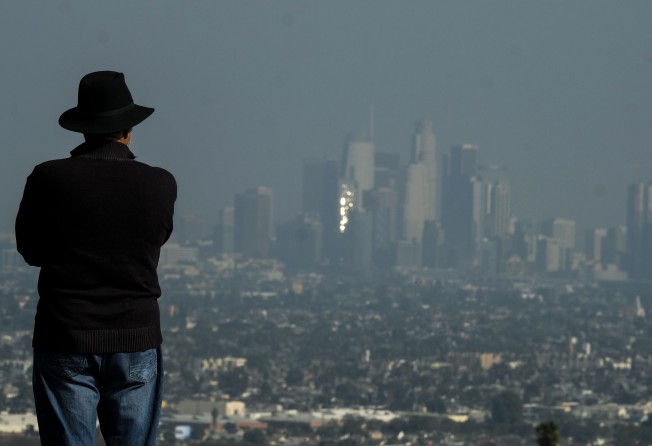
Rival US and Chinese innovators have a common cause: climate change
- Jill Baker says rising sea levels, pollution and extreme weather are global problems that must be jointly tackled by the best minds in both the US and China. The hi-tech clusters in Silicon Valley and the Greater Bay Area must lead the way

This past week, as some of the deadliest wildfires on record continued to blaze in California, the San Francisco Bay Area, including Silicon Valley, has experienced air quality in the “hazardous” range – far worse, on some days, than that of Beijing during its notorious 2013 smog, before the Chinese government took measures to reduce pollutants from coal combustion. For residents of San Francisco, their present “airpocalypse” brings home the reality that, with unchecked global warming, California will continue to be subject to drought, and can expect the fire season’s trend to worsen.
Global warming is not a local problem, but a global one. And it can be used to unite nations in innovative collaboration.
Along with my colleagues at Asia Business Council, I recently co-authored a report, titled “Shenzhen, Beijing, and Silicon Valley: Chinese and US Technology Clusters Vie for Supremacy”. We found that Chinese and American technology clusters shared success factors that help innovation to thrive. These include: the availability of talent; government support; innovation financing; and research activity. Although the Greater Bay Area (the Jing-Jin-Ji region comprising Beijing, Tianjin and Hebei) and Silicon Valley all have differences in cultural expression, the factors that nurture innovation are the same.
We also identified a shared set of next-level challenges, faced by each of the three innovation clusters, including bridging the talent and income divide; improving affordability and quality of life; fostering fair competition and developing international standards; and, upgrading environmental sustainability. Although we framed our briefing in the context of a global rivalry, what is striking is that each region is better off working together on global issues like trade and climate change, where a collaborative approach is required.

Climate change and sustainability are issues for both the US and China. The San Francisco Bay Area must deal with a host of longer-term climate change-related challenges, including sea-level rises and periods of increased drought. San Francisco’s South Bay and Silicon Valley’s bay levels are projected to rise over the coming decades. Flooding is happening now, from East Palo Alto to Sunnyvale, an area that includes the corporate headquarters of some of the largest technology companies, including Google, Facebook, and Amazon. Annual losses could run as high as US$15 billion if nothing is done.
In addition, contaminants generated by computer chip manufacturing in the 1960s and 1970s, notably trichloroethylene (TCE), led the US Environmental Protection Agency to initiate clean-up efforts in several sites in Santa Clara county, according to California-based KQED radio.
The Greater Bay Area’s vulnerability to flooding and storm surge is not new, though it has been exacerbated by urbanisation, landfills, and the dredging of major rivers. Sea levels in the Pearl River Delta are expected to rise faster than the global average and, in the next few decades, much of the southern part, which is just 30cm to 40cm above sea level, could be submerged. As the Greater Bay Area further urbanises and industrialises, development will accelerate and should force municipal governments and private companies alike to consider how prepared they are for the increased likelihood of extreme weather.
The Xiongan New Area in Baoding, Hebei, a site under development outside Beijing that is meant to alleviate the stress on Beijing’s infrastructure and ease housing price pressures, faces similar issues. Located in low-lying marshlands, Xiongan has a history of extreme weather, including both the largest flood in modern Chinese history and extreme drought. It is also terribly polluted, which will make the government’s intention to make it a green city more challenging.
Baiyang Lake, northern China’s largest wetland, is at risk. Once known as “the kidneys of northern China”, Caixin reported last year that the fragile ecosystem had been so heavily polluted by copper smelters, aluminium factories and household sewage that its water was unsuitable for drinking, or even agriculture, and could dry up all together.
To say that global problems like climate change require global solutions is a truism. But it is a message that is at risk of being forgotten in an era of growing nationalism. The US and China are not ecologically sovereign. To Silicon Valley and the Greater Bay Area, the message of destructive floods and typhoons, and choking poisonous air is clear: the world needs our innovators to work together on this shared problem.
Jill Baker is adjunct fellow at Asia Business Council, a research adviser at Terra Alpha Investments, and a contributor to Forbes.com